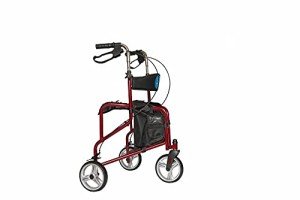Understanding Adjustable Walkers: A Comprehensive Guide
Adjustable walkers are essential mobility aids created to provide stability and assistance to people with mobility difficulties. They boost self-reliance, safety, and self-confidence for people recovering from surgical treatment, dealing with persistent conditions, or dealing with age-related mobility concerns. This article explores the functions, types, benefits, and common FAQs associated with adjustable walkers, offering insights for prospective users and caretakers.
What is an Adjustable Walker?
An adjustable walker is a mobility aid that usually features a lightweight frame with four legs, equipped with handgrips for support. It can be gotten used to accommodate various heights, ensuring users obtain a comfortable wrist position while supporting their weight. Adjustable walkers come in different styles, each customized to specific requirements.

Key Features of Adjustable Walkers
- Height Adjustment: Most adjustable walkers have telescoping legs, allowing users to quickly modify the height to match their stature.
- Weight Capacity: Different designs accommodate varying weight limitations, catering to a broad market.
- Foldability: Many walkers are collapsible, making them simple to store and transport.
- Wheels vs. No Wheels: Some walkers include wheels on the front legs, while others have a standard design without wheels, promoting stability.
- Extra Accessories: Walkers can frequently be equipped with trays, baskets, or cup holders for added benefit.
| Function | Description |
|---|---|
| Height Adjustment | Telescoping legs for tailored height settings |
| Weight Capacity | Differs by model, supporting various body weights |
| Foldability | Collapsible design for simple transport and storage |
| Wheels | Offered in both wheeled and non-wheeled choices |
| Extra Accessories | Trays, baskets, and cup holders for user convenience |
Types of Adjustable Walkers
- Standard Walkers: Traditional models with 4 legs. Best for those seeking maximum stability.
- Wheeled Walkers (Rollators): Walkers with 2 or more wheels, allowing for much easier maneuvering.
- Hemi Walkers: Designed for individuals with using one hand, featuring a single arm assistance for added stability.
- Infant Walkers: Specifically designed for babies discovering to walk, promoting safety and support throughout early mobility.
Benefits of Using Adjustable Walkers
Boost Independence
- Improved Mobility: Adjustable walkers permit users to navigate their environments with more ease and self-confidence, promoting a sense of independence.
- Accessibility: With the best walker, users can preserve their way of life and engage in activities they take pleasure in without assistance.
Injury Prevention
- Stability and Support: Walker users can keep better balance and avoid falls, which are particularly essential for seniors and people recovering from surgery.
- Decreased Strain: Proper use of a walker can alleviate tension on joints and muscles, lessening the threat of injury throughout mobility.
Convenience and Customization
- Adjustable Settings: Walkers can be tailored to each user's height and comfort, providing a more tailored experience.
- Additional Features: Options for devices assist in accommodating individual requirements, enabling users to bring products while moving.
Costs and Considerations
The price of adjustable walkers ranges depending upon functions, products, and brand name. Here's an introduction of the average expenses connected with various types:
| Walker Type | Typical Cost |
|---|---|
| Standard Walkers | ₤ 50 - ₤ 100 |
| Wheeled Walkers | ₤ 75 - ₤ 200 |
| Hemi Walkers | ₤ 60 - ₤ 150 |
| Infant Walkers | ₤ 30 - ₤ 70 |
Often Asked Questions (FAQs)
1. How do I know which adjustable walker is best for me?
The best Adjustable Walker [http://Daiqz.com] depends on your specific needs, physical condition, and environment. It's vital to consult a health care expert to identify the most suitable type.
2. Can I change the height of any walker?
Many adjustable walkers feature a height-adjustment system. However, not all walkers are adjustable. It's crucial to analyze product specs before purchasing.
3. Are wheeled walkers safe to use?
Yes, wheeled walkers (or rollators) are safe for users who can browse them appropriately. They frequently consist of brakes for included safety when fixed.
4. How do I look after my adjustable walker?
Routine care includes cleaning up the walker with moderate soap and water, looking for wear on grips and wheels, and guaranteeing mechanisms run smoothly.
5. Can I take my adjustable walker on public transport?
Yes, lots of adjustable walkers are foldable and created for simple transport. Nevertheless, it's suggested to examine the specific standards of the transportation service.
6. Do I need help to use an adjustable walker?
Many users can run adjustable walkers independently, particularly when correctly fitted to their height. Nevertheless, those with severe mobility issues may gain from help.
Adjustable walkers are vital tools for boosting mobility, independence, and safety. With a range of design and styles, individuals can discover a walker customized to their needs. Caretakers and users alike must value the value of consulting health care professionals to make educated choices relating to mobility aids. Comprehending the functions, benefits, and considerations of adjustable walkers empowers individuals to preserve an active way of life, enriching their quality of life in spite of mobility obstacles.

